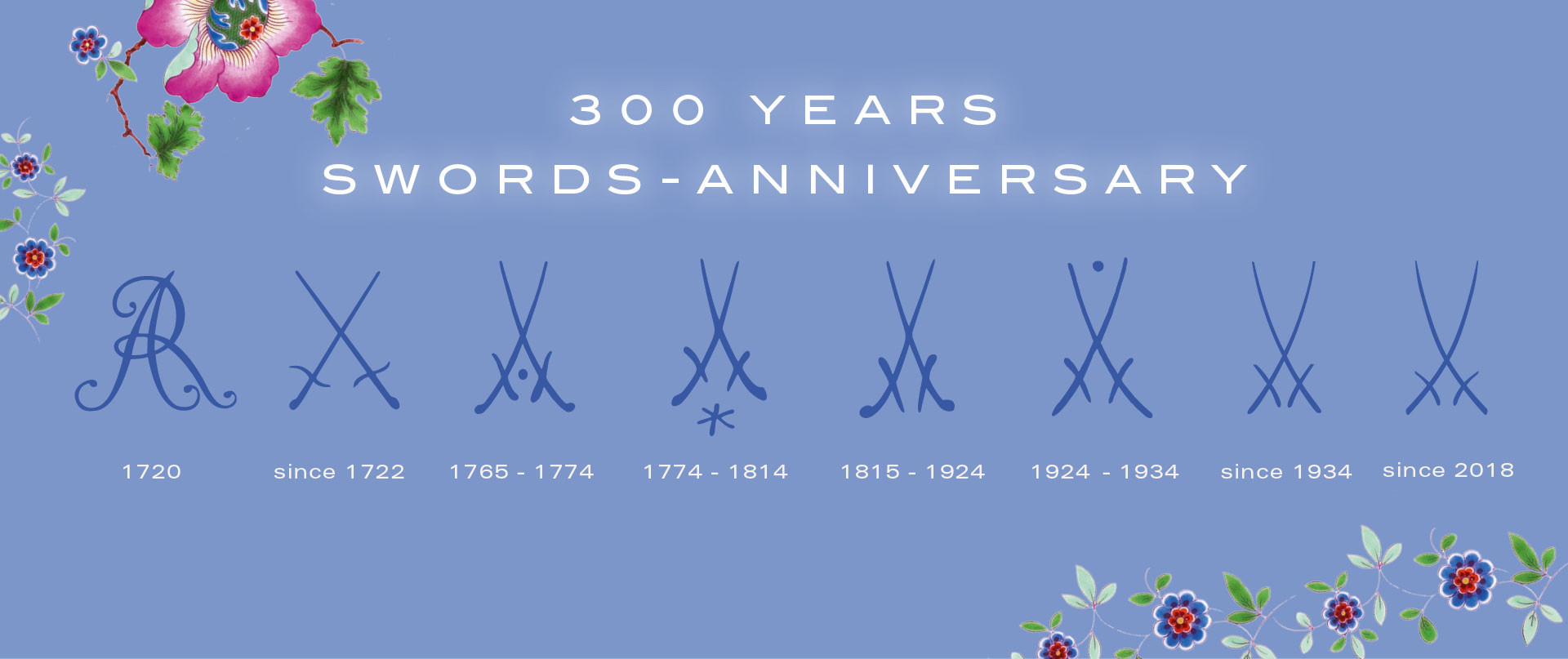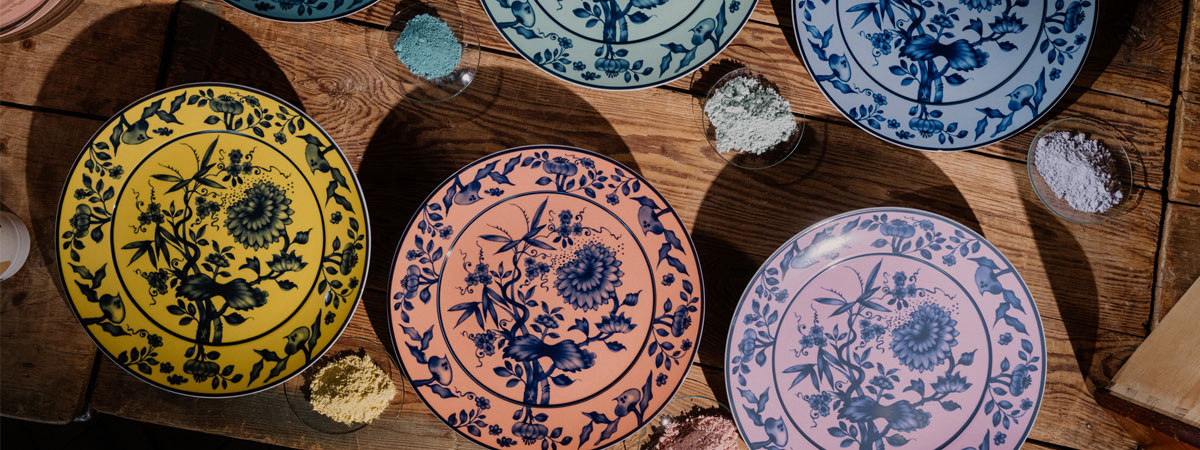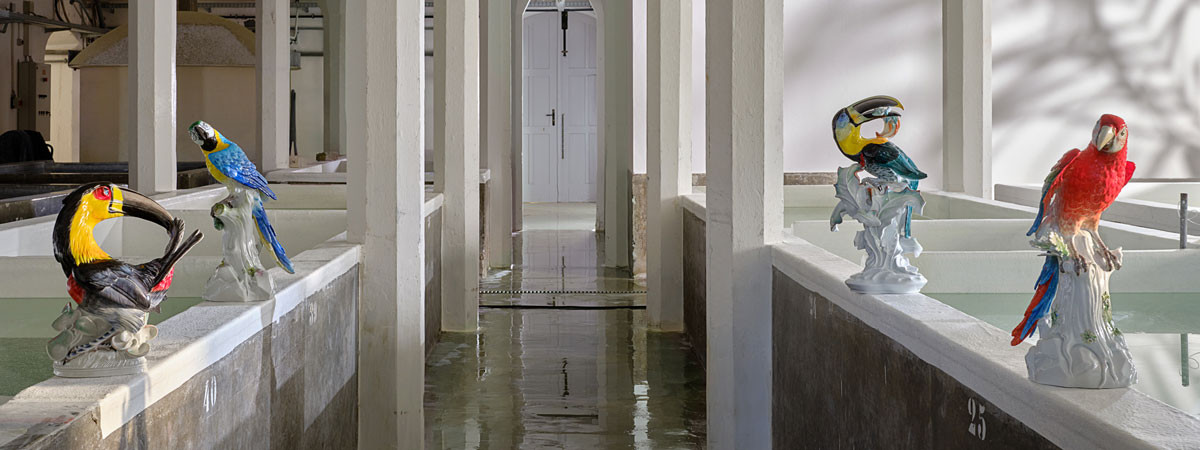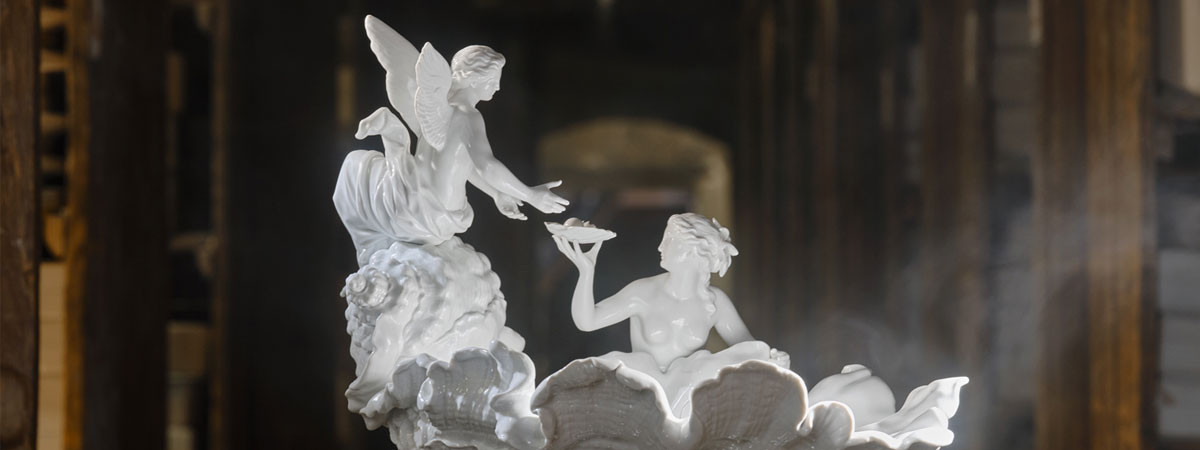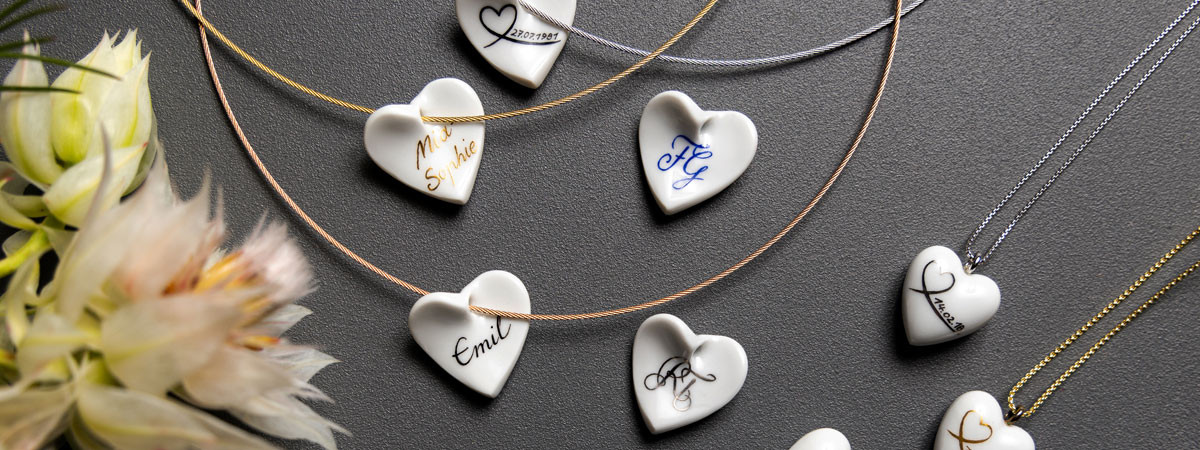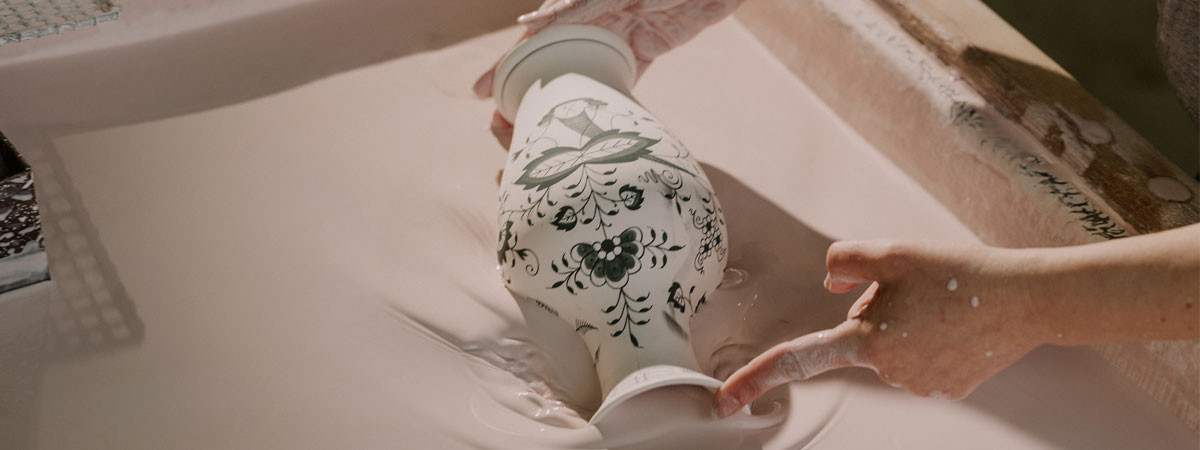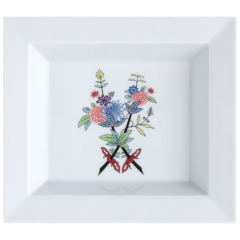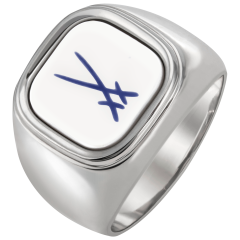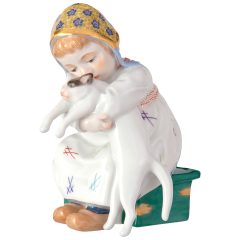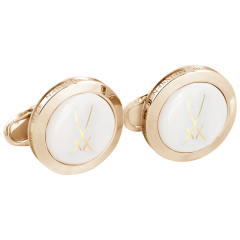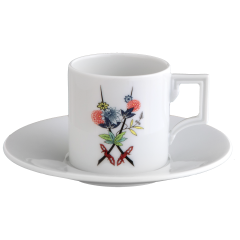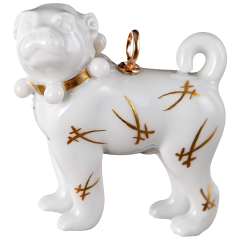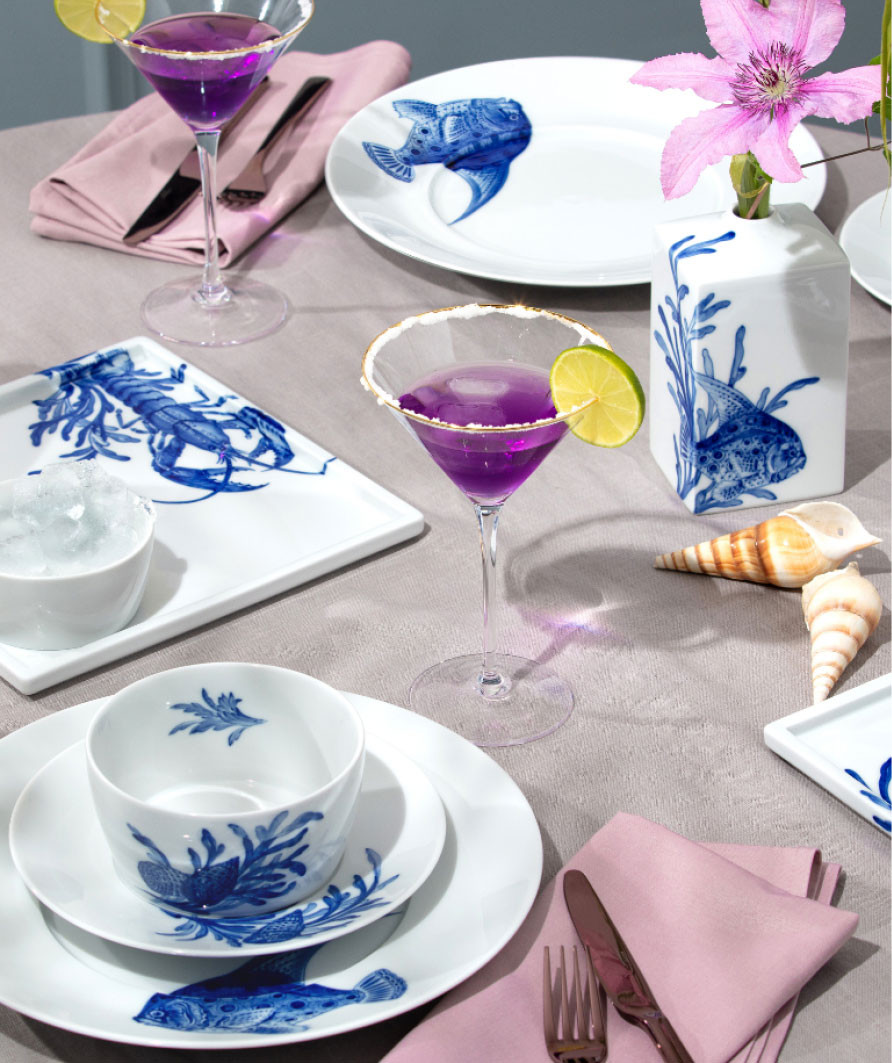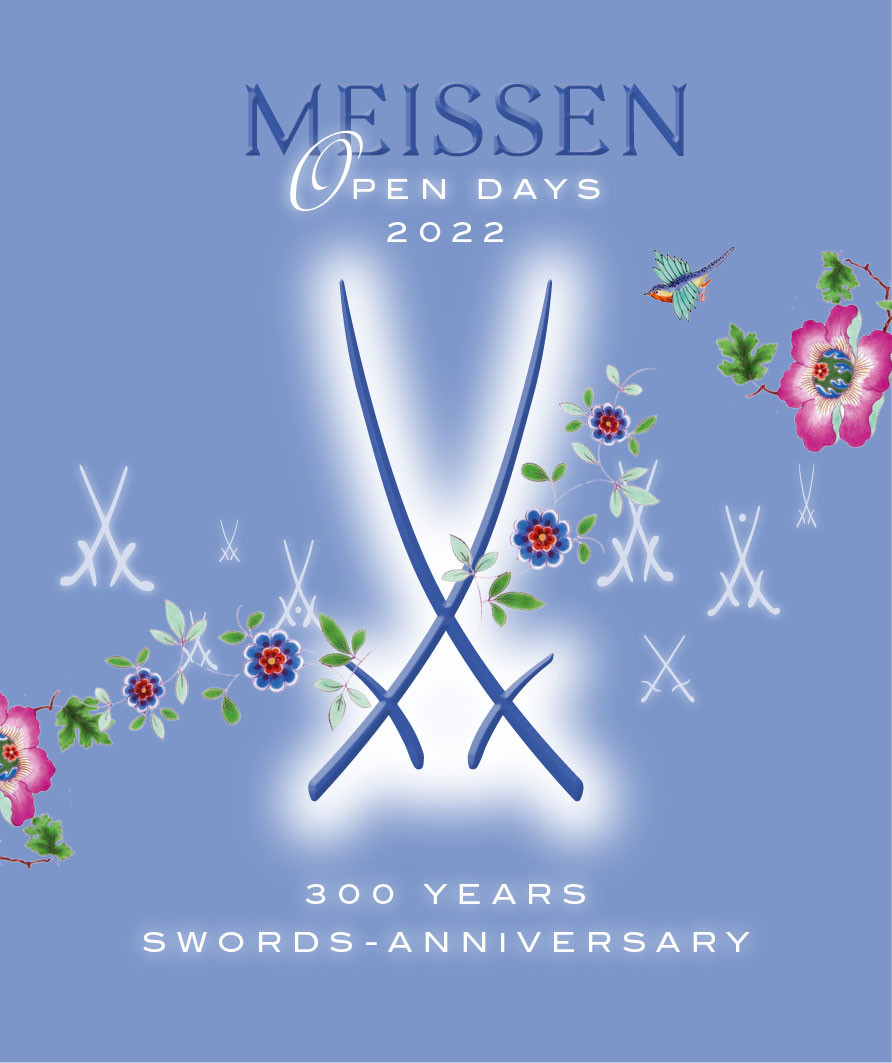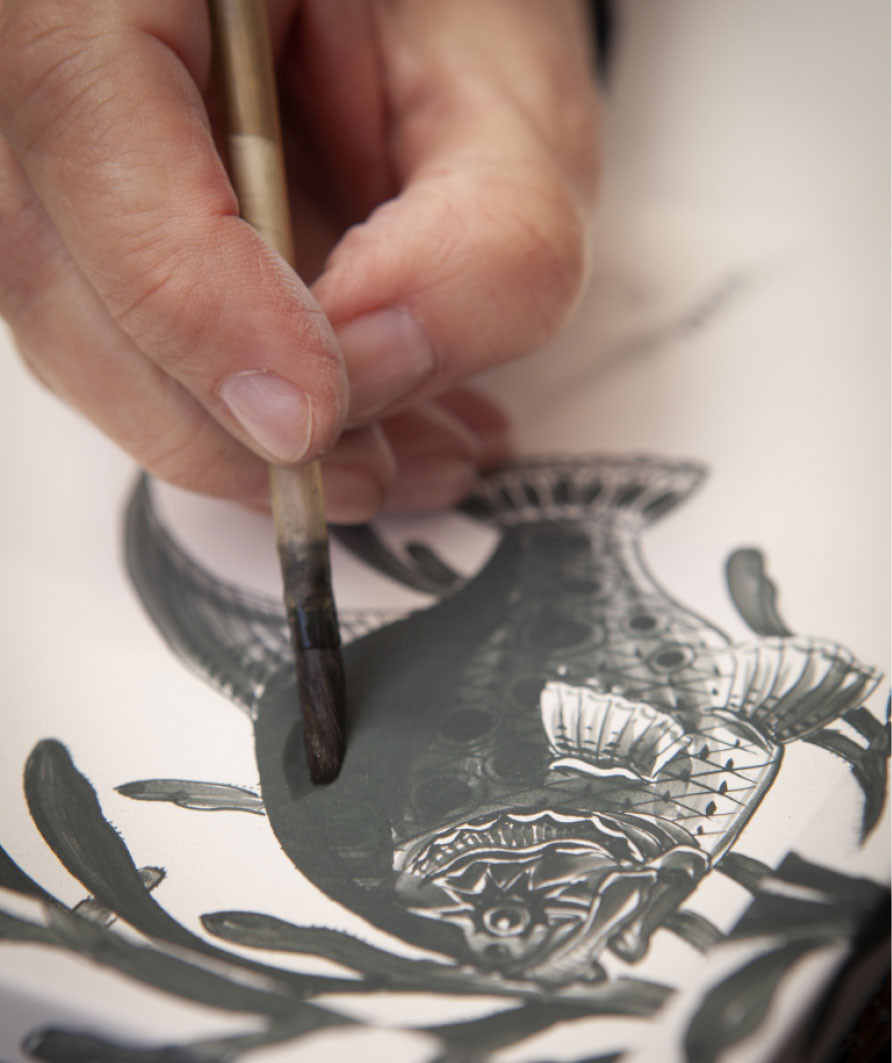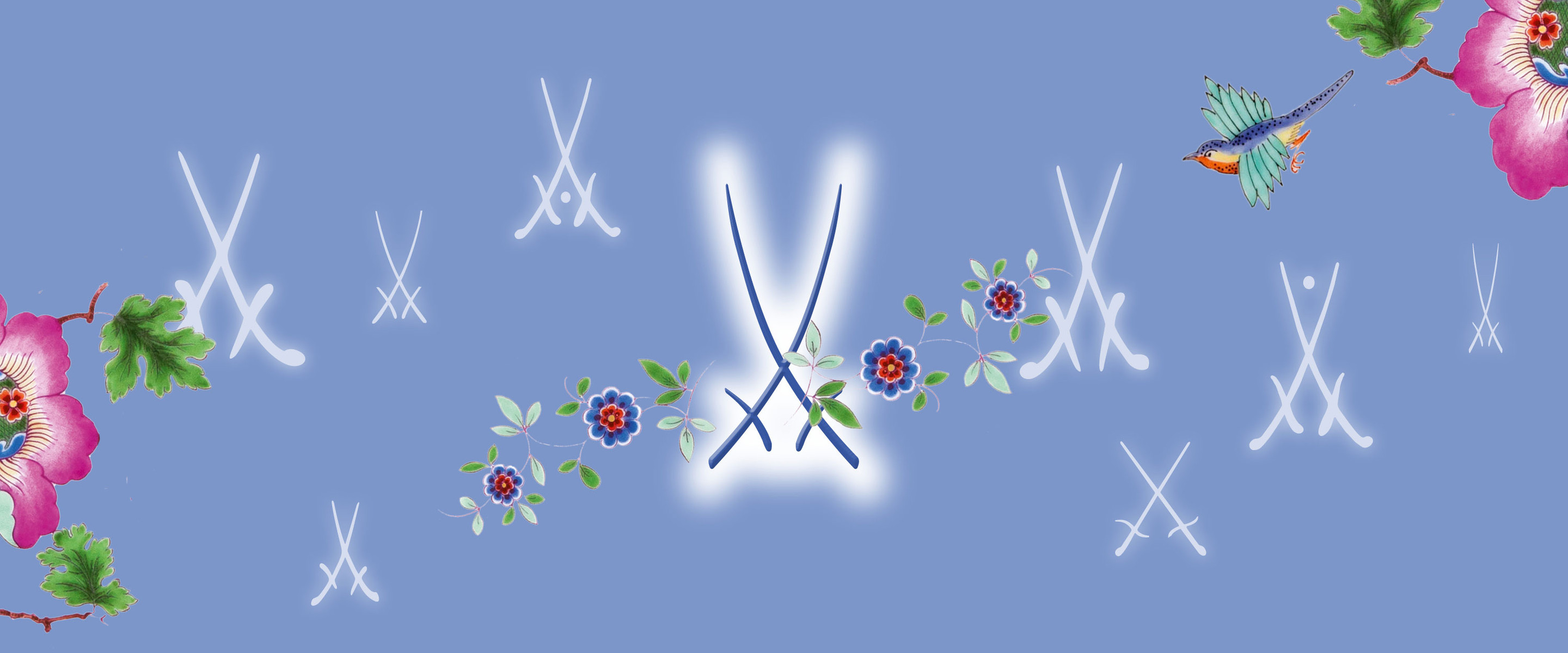
300 Years Swords Anniversary
-
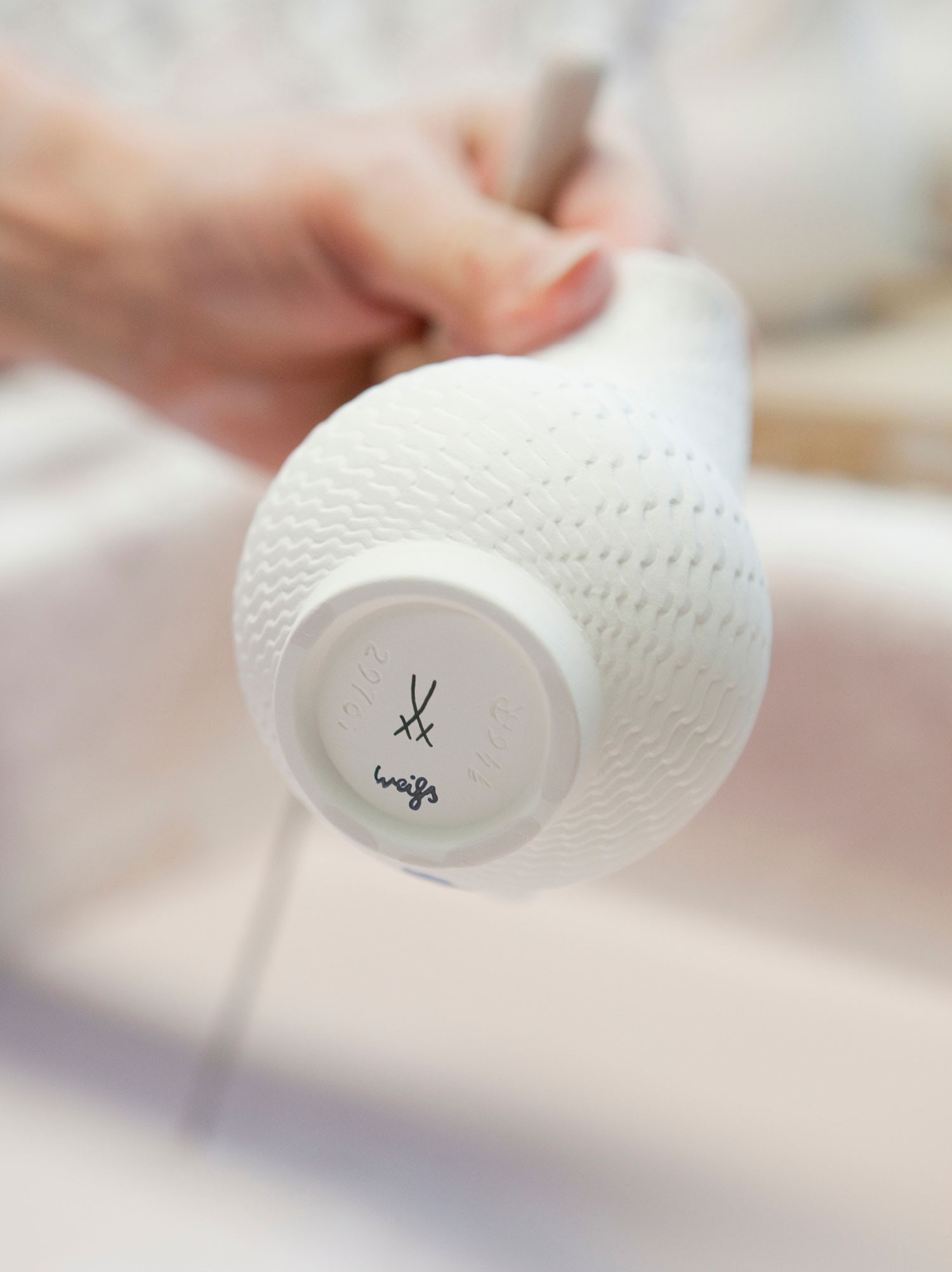 Once upon a time there was a young man who arrived at "Albrechtsburg Meissen" on 19 January 1706 as one of six miners from Freiberg to serve Johann Friedrich Böttger. There is a good reason why the name Böttger probably sounds familiar to you, because the alchemist, together with Ehrenfried Walther von Tschirnhaus, succeeded in producing the first European hard porcelain in 1707. The 21-year-old Samuel Stölzel, who was born in the village of Scharfenberg not far from the city of Meissen and had previously only been allowed to look at "Albrechtsburg" from the outside, was henceforth to work in the castle as a beater and burner in order to further advance porcelain production.
Once upon a time there was a young man who arrived at "Albrechtsburg Meissen" on 19 January 1706 as one of six miners from Freiberg to serve Johann Friedrich Böttger. There is a good reason why the name Böttger probably sounds familiar to you, because the alchemist, together with Ehrenfried Walther von Tschirnhaus, succeeded in producing the first European hard porcelain in 1707. The 21-year-old Samuel Stölzel, who was born in the village of Scharfenberg not far from the city of Meissen and had previously only been allowed to look at "Albrechtsburg" from the outside, was henceforth to work in the castle as a beater and burner in order to further advance porcelain production.
In 1710, the first European porcelain manufactory was finally founded by Augustus the Strong, who entrusted Böttger with the management of the "Königlich-Sächsische Porzellanmanufaktur zu Meißen". Stölzel succeeded in becoming arcanist and head master of the manufactory by 1719. The tasks of an arcanist were the preparation of the porcelain mass, the firing as well as the colouring, gilding and glazing, which of course required that Stölzel learn the secret recipe of Meissen porcelain. But what happened in 1719? The now 34-year-old got a woman pregnant, needed money and fled to Vienna, where he was promised an exceedingly high annual salary, a flat and other incentives. This is how Europe's second porcelain manufactory came to be founded in Vienna, initially copying everything that came from Meissen. The manufactory inspector at the time, Johann Melchior Steinbrück, did not want to let this go and in 1722 suggested that the crossed swords of the coat of arms of the Electorate of Saxony be used to mark the original Meissen porcelains. To this day, the swords are hand-applied to each individual porcelain in cobalt blue underglaze painting by specially trained "Swordsmen".
„For 300 years, the Crossed Swords have stood for craftsmanship in perfection."
-
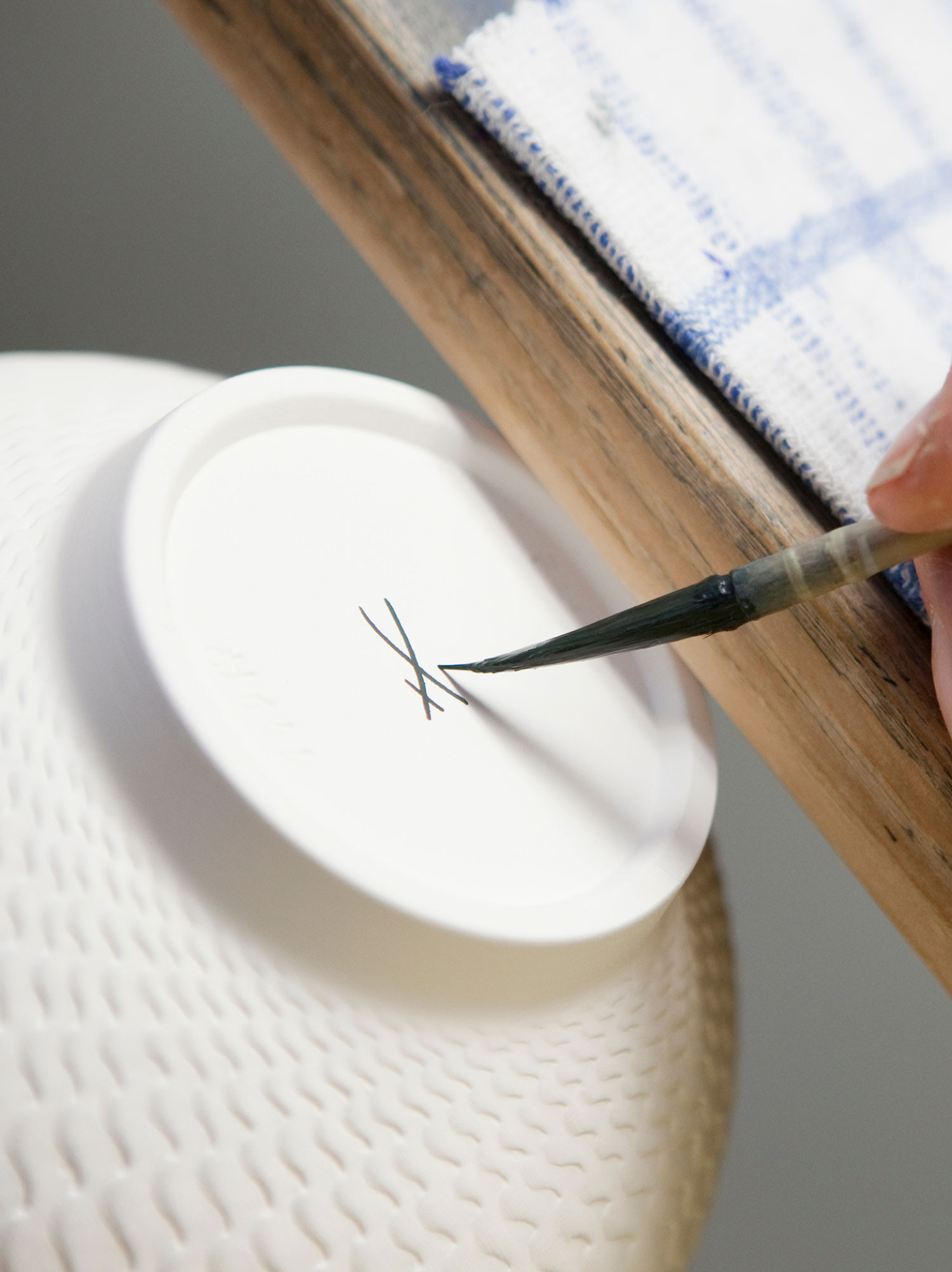 So this year MEISSEN is celebrating the "300 Years Swords Anniversary" and paying special attention to how the swords have changed over the centuries - they have always remained recognisable and iconic, but the swords' evolution tells of different eras and the manufactory's rich heritage. After the Saxon electoral swords were introduced in 1722, the porcelains were marked as originals from 1765 to 1774 with the so-called "Dot Sword Mark", although the exact meaning of the dot remains a mystery to this day. This was Meissen's first great period of prosperity: under the direction of Johann Gregorius Höroldt, the first heat-resistant underglaze and onglaze colours were produced, which made it possible to create unimagined colourful decors such as the "Chinoseries" or the "Blue Onion". Johann Joachim Kaendler created the opus magnum of German Baroque art - the "Swan Service" with over 2,200 individual pieces - as well as one of the most outstanding works of all time, the "Snowball Blossoms".
So this year MEISSEN is celebrating the "300 Years Swords Anniversary" and paying special attention to how the swords have changed over the centuries - they have always remained recognisable and iconic, but the swords' evolution tells of different eras and the manufactory's rich heritage. After the Saxon electoral swords were introduced in 1722, the porcelains were marked as originals from 1765 to 1774 with the so-called "Dot Sword Mark", although the exact meaning of the dot remains a mystery to this day. This was Meissen's first great period of prosperity: under the direction of Johann Gregorius Höroldt, the first heat-resistant underglaze and onglaze colours were produced, which made it possible to create unimagined colourful decors such as the "Chinoseries" or the "Blue Onion". Johann Joachim Kaendler created the opus magnum of German Baroque art - the "Swan Service" with over 2,200 individual pieces - as well as one of the most outstanding works of all time, the "Snowball Blossoms".
From 1774 onwards, a "Marcolini star" was added to the trademark below the swords. With the new director Count Marcolini, a stricter orientation towards architectural and ornamental forms of antiquity displaces the Baroque colour scheme in favour of tone-in-tone painting. With the new director Carl Wilhelm von Oppel from 1814, the swords change again and are henceforth characterised by broad, irregular brushstrokes. Von Oppel initiated necessary changes in the artistic and technical fields. With the appointment of Heinrich Gottlob Kühn, he brings a factory inspector to Meissen, to whom the most important technological innovations of the time can be attributed. Even today, the bright gold refinement developed at that time adorns numerous elegant porcelains. Soon the rooms in "Albrechtsburg" became too small, their routes too long or too inconvenient, so from 1861 to 1864 a new factory was built in Meissen's Triebischtal valley. To this day, this is the only production site of the manufactory in the world.
In 1918, with the fall of the German monarchy, the name was changed to Staatliche Porzellan-Manufaktur Meissen. In the same year, Max Adolf Pfeiffer is appointed director of the manufactory. Under his leadership, the artistic achievements at MEISSEN reach a level comparable to those of the first heyday in the 18th century. Pfeiffer engages artists such as the exceptional talents Paul Scheurich and Max Esser, who give porcelain new expressive possibilities. From 1924 to 1934, the Crossed Swords were given the "Pfeiffer Dot" between the blades. After 1934, the uniform sword mark was only very slightly altered. They have now stood for craftsmanship in perfection for 300 years.
